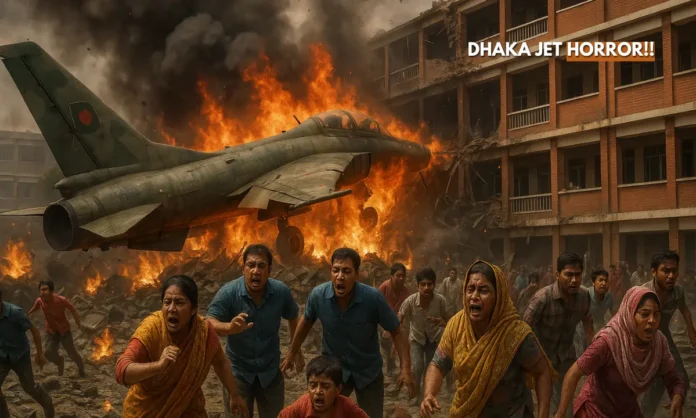Summary
- 27 killed and over 170 injured after a Bangladesh Air Force F-7 BGI jet crashed into a school in Dhaka.
- The crash has intensified scrutiny of Chinese-made fighter jets, particularly the Chengdu F-7 series.
- Experts and records reveal a troubling history of accidents involving Chinese aircraft in Bangladesh.
A Catastrophic Crash That Shook Dhaka
The tragic crash of a Bangladesh Air Force (BAF) F-7 BGI fighter jet into Milestone School & College in Dhaka on Monday has left the nation reeling. With at least 27 lives lost, including the pilot Flight Lieutenant Towkir Islam Sagar, and over 170 injured, this is among Bangladesh’s deadliest aviation disasters in recent history. Eyewitnesses described scenes of chaos as flames and debris consumed the school campus, turning a normal afternoon into a nightmare.
Sagar, on his first solo fighter mission, attempted to steer the jet away from densely populated areas but failed due to a “technical malfunction,” according to the Inter Services Public Relations (ISPR). The authorities have launched a high-level inquiry, yet the incident has reignited debates over Bangladesh’s continued reliance on ageing Chinese aircraft like the Chengdu F-7, a design rooted in the 1960s Soviet MiG-21.
Bangladesh Air Force's Made in China F-7 fighter jet crashed in Milestone School in Dhaka.
— Incognito (@Incognito_qfs) July 21, 2025
More than 25 killed and 75+ injured.
Bangladesh Air Force has seen multiple Made in China jet crashes recently. Sources have confirmed that China bribes Bangladeshi officials and forces… pic.twitter.com/853quUqAMU
The Controversial Legacy of the Chengdu F-7
- The F-7 BGI, though modernised, is based on a decades-old MiG-21 blueprint.
- Multiple nations, including China and Myanmar, have recorded fatal J-7/F-7 crashes.
- Production of these aircraft ceased in 2013, with Bangladesh among the final recipients.
The Chengdu F-7 has long faced criticism for safety concerns and limited operational capability. In 2022, a similar J-7 model crashed into a residential area in China, and in 2025, a Myanmar Air Force J-7 went down under suspicious circumstances. Aviation analysts argue that the F-7 is now outdated, particularly in the face of modern combat demands. Yet, its affordability and utility for pilot training make it a mainstay of the Bangladesh Air Force, which operates around 40 such jets.
The Bangladesh Air Force’s crash record only adds to the unease. Reports reveal 27 crashes since 1992, with 7 involving Chinese aircraft in the past two decades alone. While factors like bird strikes and human error play roles, critics highlight persistent maintenance and reliability issues with the Chinese-made fleet.
Rising Public and Military Outrage
- Calls grow for phasing out older Chinese aircraft from BAF’s fleet.
- Families demand accountability after repeated tragedies involving Chinese planes.
- Aviation safety experts push for comprehensive maintenance and fleet modernisation.
The Dhaka crash has triggered strong public anger and raised difficult questions for military leadership. Former air force officials, speaking anonymously, have criticised the continued dependence on these jets despite recurring failures. “Chinese aircraft are one of the main reasons behind these repeated crashes,” said one retired officer, urging a shift toward more modern, reliable platforms.
Military experts believe that the BAF must urgently invest in next-generation fighter programs, diversify suppliers, and overhaul its maintenance protocols. Without such steps, the tragic pattern of crashes and loss of life is unlikely to end.
Beyond the Crash: A Moment for Reform
This disaster has become more than a tragic accident — it is a wake-up call for Bangladesh to critically evaluate its defence procurement policies. While Chinese aircraft offer cost advantages, their long-term safety and reliability come into question when measured against the recurring toll on human life.
If Bangladesh wants to avoid future tragedies like the Dhaka school disaster, it must look beyond short-term solutions and prioritise both technological and procedural overhauls. The families mourning their children and loved ones demand nothing less than accountability and change.


